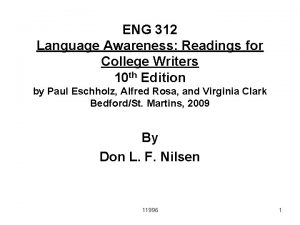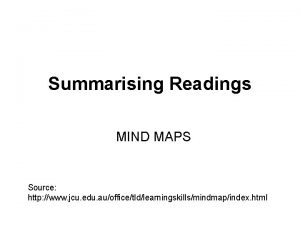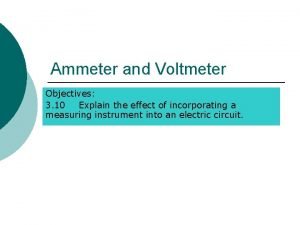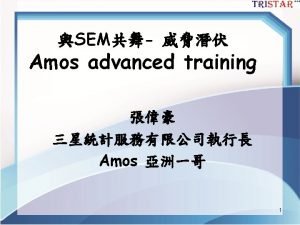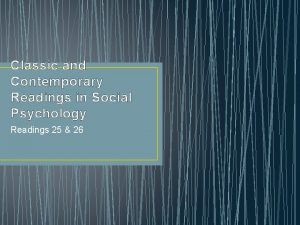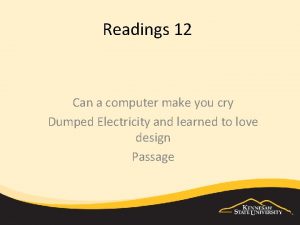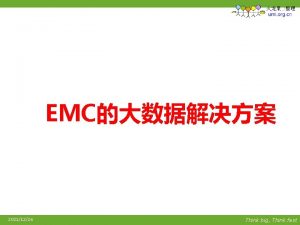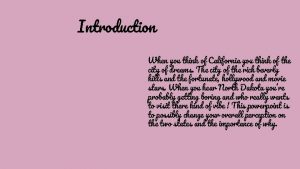What do this weeks readings make you think























- Slides: 23

• What do this week’s readings make you think about? • How can these articles be read as design criticism over an above technology criticism? • Does the author have a bias toward technlogy? • Do they offer arguments and counter-arguments? • Or are they purely polemical?

www. decolonisingdesign. com • We believe that a sharper lens needs to be brought to bear on non-western ways of thinking and being, and on the way that class, gender, race, etc. , issues are designed today. We understand the highlighting of these issues through practices and acts of design, and the (re)design of institutions, design practices and design studies (efforts that always occur under conditions of contested political interests) to be a pivotal challenge in the process of decolonisation. … • Our objective—as design scholars and practitioners—is to transform the very terms of present day design studies and research.

The Deglobalizer www. paolocardini. com/The-Deglobalizer • The project, developed in partnership with the Qatari designer Aisha Al-Sowaidi, has been showcased during Design Days Dubai 2014 and pointed as one of the most pertinent project of the event.


Writing issues • What is an author’s “argument”?

What is awkward here? • When the vase broke, it startled the children. They had never noticed it before. Then they went on playing. Kreienbrock elaborates on Heidegger’s observation that we take things (“equipment”) for granted when they are “ready to hand, ” meaning in the spaces and conditions of usability in which we expect to find them. 1

What is awkward here? Among other strategies, the directors of the film Czech Dream used negative advertising to explore its affects on people. Not theoretically but in actuality. RIP Decorum describes a disconnect between Target’s ads and the interiors of their stores. She is concerned with the experience of shopping in big box stores and not what is purchased.

Week 14 The Exhibition: Photography and Film and Time Bring laptop or tablet to do course evaluation in class. Read: • Dilnot, Clive. “Chris Killip: The Last Photographer of the Working Class. ” Afterimage: The Journal of Media Arts and Cultural Criticism 39, no. 6 (May/June 2012), 15 -18. • Schjeldahl, Peter. “Looking Back: Diane Arbus. ” (March 2, 2004) in Let’s See: Writings on Art from The New Yorker. New York: Thames and Hudson, 154 -156. • Smith, Zadie. “Killing Orson Welles at Midnight, ” New York Review of Books. April 28, 2011. Come prepared to discuss each in terms of content and prose style.

Week 13 Technology Critiques

“Toward a Constructive Technology Criticism” Sarah M. Watson (2016) • “Constructive criticism poses alternative possibilities. ” • Argument: The word “criticism” in the context of technology tends to carry a negative and judgmental connotation rather than one of critique, contextualization, and interpretation.

Counter Argument: Because progress, and by association technology, resist criticism, the task of constructing thoughtful technology criticism is especially difficult [if the writer is not to seem to be paranoid]. It is all too easy to dismiss critics of technology when they focus only on the drawbacks of a dominant system. Philosopher and ethicist Evan Selinger explains the unfairness of the dismissal: “‘Paranoia’ has connotations of irrationality and delusion. It’s an unfair association. . . It’s particularly troubling because versions of the rhetoric are routinely applied to technology critics to unduly strip their skepticism of legitimacy. ” 70

(a) purpose of criticism Criticism, cultural or otherwise. . . offers readers new ways of seeing, knowing, and experiencing that articulate an innate feeling, a concern, or question. As writer and critic Daniel Mendelsohn puts it: “What I was really learning from those critics each week was how to think. “

• So what do this week’s readings make you think about? • How can these articles be read as design criticism over an above technology criticism? • Does the author have a bias toward technlogy? • Do they offer arguments and counter-arguments? • Or are they purely polemical?

“Welcome to Dataland” Ian Bogost (2014)

Epcot today

Celebration, Orlando, Florida


Movie theater Cesar Pelli

Town Hall Philip Johnson

Post Office Michael Graves

Energy Futures, Dunne & Raby, 2004

“We Know How You Feel” Rafi Khatchadourian (2015) • So what does this reading make you think about? • How can this be read as design criticism over an above technology criticism? • Does he have a bias re technology? • Does it offer arguments and counter-arguments? • Or is it purely polemical?

“Our Driverless Future” Sue Helpern (2016) • So what does this reading make you think about? • How can this be read as design criticism over an above technology criticism? • Does she have a bias re technology? • Does it offer arguments and counter-arguments? • Or is it purely polemical?
 Dream with eyes open
Dream with eyes open If you think you can you can poem
If you think you can you can poem The types of reading
The types of reading Theodolite is used to measure
Theodolite is used to measure Vernier caliper msr and vsr
Vernier caliper msr and vsr How to write keratometry readings
How to write keratometry readings 312زبان عشق
312زبان عشق Confined space gas limits
Confined space gas limits Rad 57 readings
Rad 57 readings Arterial blood gases normal values
Arterial blood gases normal values Graduated cylinder readings
Graduated cylinder readings Environmental management: readings and cases
Environmental management: readings and cases Responsive readings for christmas
Responsive readings for christmas Responsive reading thanksgiving
Responsive reading thanksgiving Jcu map
Jcu map What is the reading on the ammeter
What is the reading on the ammeter Normal ecg readings
Normal ecg readings Robin and jay poem
Robin and jay poem Think family ni
Think family ni So you think you can argue
So you think you can argue Choose the correct answers a c
Choose the correct answers a c Alan and susie an argument
Alan and susie an argument Do you know minecraft
Do you know minecraft What comes to mind when you hear the word 'family'?
What comes to mind when you hear the word 'family'?






